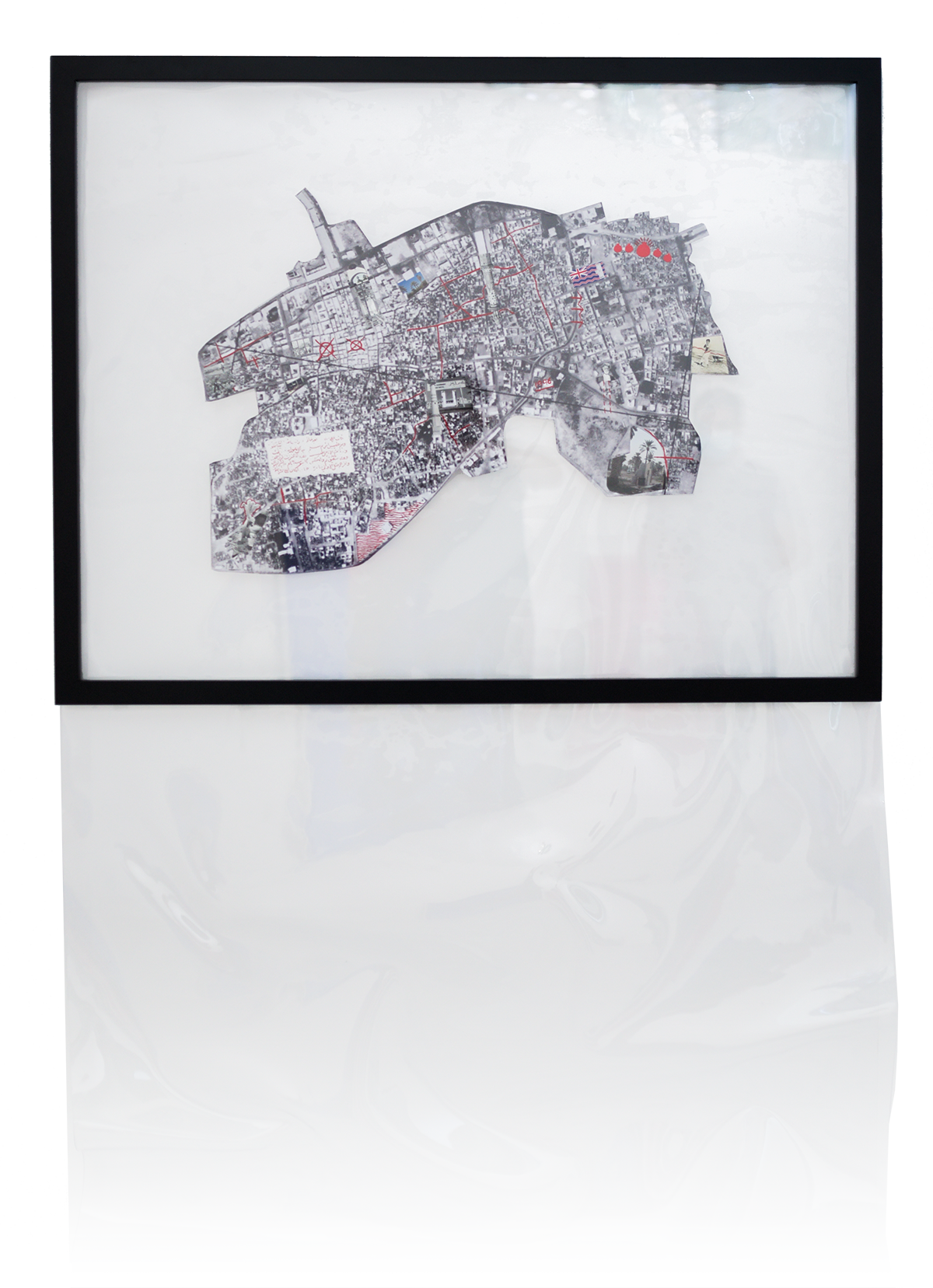The City of Port is a mixed media installation that journals the artist’s exploration of the city of Manama. The artist grew up in Manama and his attachment to the city is present in his research and art that document and encapsulate Manama’s soul through its built and unbuilt spaces. The City of Port depicts Manama as a map superimposed with a collage of photography and depicts each area and space in Manama through a description of it from the residents there, thus humanizing the city and regarding it as an extended entity from its residents.
The City of Port is a wall mounted installation that is 1.4m in width, 2m in height and a depth of 1m. The collaged map is supplemented with vinyl that extends from the piece and escapes onto the floor, mimicking the flow of water and symbolizing the notion of water escaping from the city.
Exhibited in
Bahrain National Theater, Bahrain
Produced in
2021
Part of
47th Bahrain Annual Fine Arts Exhibition

Bab Albahrain
Bab Al Bahrain was built first by the welling and design of Sir. Charles Belgrave in 1948 to be a gate where visitors enter the island. This iconic building with the concept of the singular entrance to Bahrain was in one way or another a representation of the power of the Manama Market over the island’s commercial activities. Centralizing all the country street networks to the capital city and Bab Al Bahrain in particular.
Alfadhel Mousqe
Al Fadhel Mosque is one of two mosques in Manama that had minarets. This major mosque was the first spiritual people to see from the sea on their way to the harbor.
Ras Ruman
Ras – means Cape, Ruman – means Pomegranate. The Cape of Pomegranate is a small village on the east side of Manama city where it was one full of pomegranate trees on an island that is famous for its Palm trees only. Nowadays you can find Ras Ruman as one of the last neighborhoods that still has its local community as it is for more than three centuries.
Alhoora Coast
Alhoora Coast was one of the few island coasts where you can reach the land safely even on the windiest days. This feature made Alhoora coast so valuable that it was a part of the island’s history for more than eight centuries till the reclamation process begun in the 1960s.
Alhoora Palm Trees
Alhoora Village was controversial the main settlement in Alhoora Coast. Being the highest village in all-most flat topography Manama city, created special characteristics for Alhoora Village. One of these characteristics is the historical Alhoora palm trees garden where you can walking through the trees while looking into the entire city from up.
Khalaf Square
Khalaf Mosque had the highest minaret in Manama, Khalaf House had one of the most iconic “mishrabiya”. These two buildings created a square in front of them that was connected directly to Manama girl’s school. In an iconic path between the spiritual space to the educational space passing through the Manama beautiful architecture.
Manama in poetry
Between 1591 and 1601, Abu Albahr Alkhati – poet and religious figure – lived in Bahrain. Where he described Bahraini villages in detail using the poem and only poem. Many researchers consider his writings as the possible document that might describe Manama land before the existence of the urban city.
Meshbur Water spring
In Manama there were many water springs that enhanced the green surfaces of the city. Meshbur water spring was the main water source for the most of southern Manama groves.




